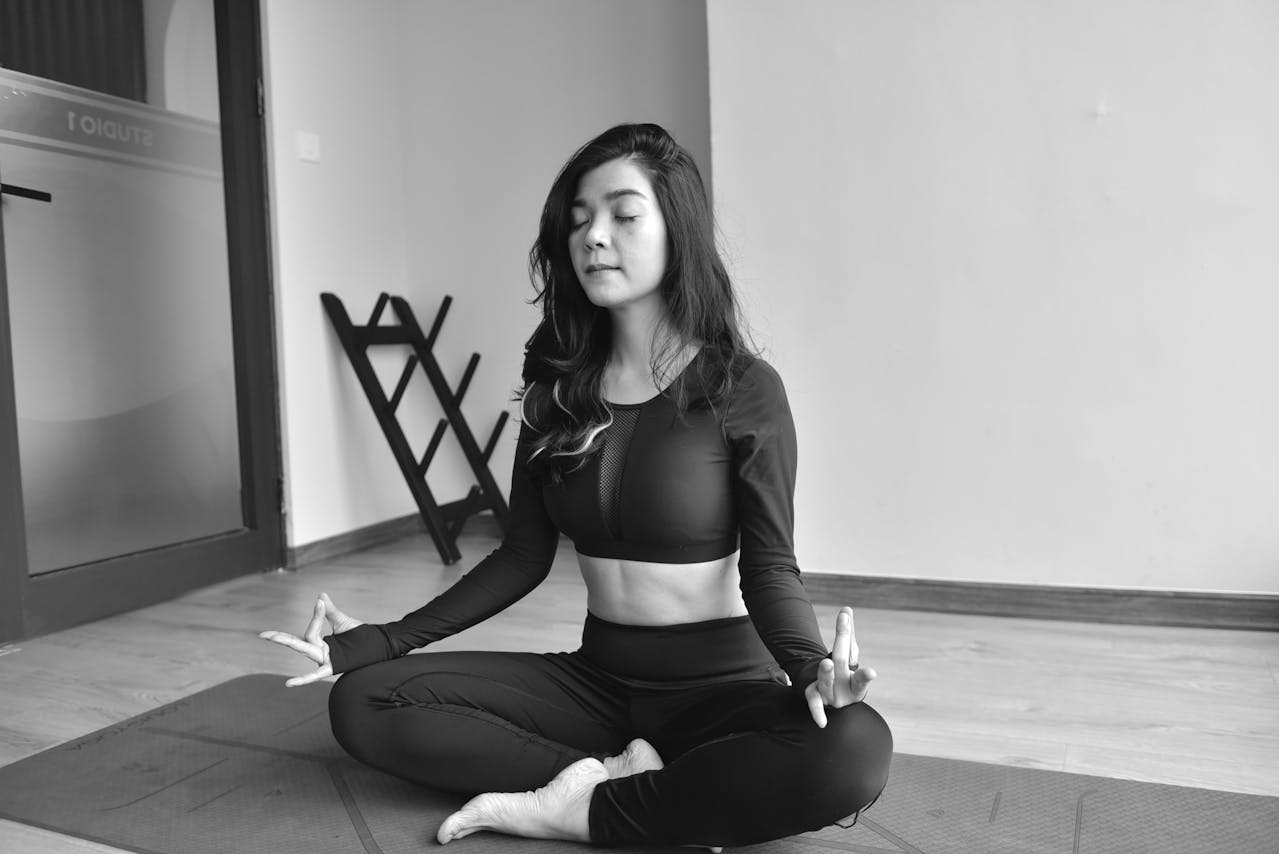
Table of Contents
Square breathing, also known as box breathing, is a versatile relaxation technique embraced in diverse environments—from the calming corners of therapists' offices to the serene spaces of yoga studios and meditation centers.
Box Breathing Explained
We all face stress, but only some know how to manage it effectively. Box breathing, a powerful yet simple technique, offers a solution. In our fast-paced world, stress is a common challenge. Box breathing, a simple yet profound technique, is an oasis of calm.
This breathing method harnesses the power of deep, rhythmic breathing to trigger a relaxation response.
By following a specific pattern – inhaling, holding, exhaling, and holding – for a count of four, you can shift from a state of stress to one of calm.
Introduction to Box Breathing
Mark Divine, a former Navy SEAL, frequently discusses this technique during his lectures on breathing, sometimes referring to it as tactical breathing. He spoke about this at MNT:
“I used it daily in SEAL training … it helped me graduate as the honor man. Now I use it for every challenging situation and practice it daily.”
Used by elite professionals like Navy SEALs and police officers, it involves a four-part process: inhale, hold, exhale, and hold again. Each step is done for a count of four, creating a 'box' of breath that brings focus and tranquillity.
The Science of Box Breathing
Delving into the science, box breathing activates the parasympathetic nervous system, transitioning the body from fight-or-flight mode to the rest-and-digest state.
This physiological shift reduces stress, calms the mind, and stabilizes the heart rate. It’s a testament to the power of controlling the breathing rhythm in regulating the body's responses.
Benefits of Box Breathing
The benefits of box breathing are extensive and known to be a powerful tool in lowering blood pressure, reducing anxiety, and enhancing mental health.
It's particularly effective when feeling stressed, improving emotional well-being and fostering a deeper connection to the present moment. This practice is a valuable tool for anyone looking to find balance.
Additional benefits include:
- Reduce stress and anxiety
- Helps lower blood pressure
- Regulates emotions
- Improves focus and concentration
- Enhances sleep quality
- Improves cardiovascular health
- Increases oxygenation
- Improves mental health
- Helps stay in the present moment
How to Practice Box Breathing
To start the breathing exercise, take a few deep breaths, then focus on the exhale and emptying your lungs of air.
Take your time and exhale slowly and gently, directing your complete attention to letting go of the breath. Once you feel ready, proceed with the following steps to continue the practice once you find yourself in a comfortable position in a quiet environment:
Step 1: Inhale
Take a slow, deep breath through your nose, filling your lungs. Count to four as you inhale slowly, focusing on the sensation of your breath entering your body.
Step 2: Hold
Once you have completed the inhalation, hold your breath for four counts. Maintain a relaxed state without straining or tensing your body.
Step 3: Exhale
Slowly exhale, releasing your breath gently and fully through your mouth, counting to four as you exhale. Focus on the sensation of all the air leaving your body.
Step 4: Hold
After exhaling, hold your breath for another count of four before starting the next cycle.
Repeat steps one through four, continuing the process, repeating the four-part cycle of inhalation, holding, exhalation, and holding for at least five minutes.
Gradually, you can increase the duration of each phase or the overall practice time as you become more comfortable.
For example, you might wish to double the length of each cycle:
- Inhale to a count of 8
- Hold for a count of 8
- Exhale for a count of 8
- Hold for a count of 8
- And repeat
Varying the count number in box breathing practice can have multiple benefits, such as improving concentration and enhancing deep breathing techniques, particularly in the case of total concentration breathing.
Risks And Contraindications Of Box Breathing
While box breathing is generally considered safe for most individuals when it comes to breathing exercises, there are risks and negative effects to consider, such as:
- Hyperventilation
- Respiratory conditions
- Low blood pressure
- Psychological conditions
- Pregnancy
How Does Four Square Breathing Impact The Nervous System?
The autonomic nervous system governs the body's conscious and unconscious functions.
Within this system are two subsystems: the sympathetic nervous system (commonly known as the fight or flight response) and the parasympathetic nervous system.
When faced with stress, the sympathetic nervous system is activated through diaphragmatic breathing, acting as a "gas pedal" for releasing hormones. This stress response can lead to symptoms such as sweating, heavy breathing, and a racing mind.
While this reaction is useful in life-threatening situations, it is less desirable during everyday scenarios like giving a work presentation.
Deep breathing techniques like box breathing prove immensely beneficial to regain control over the nervous system in such situations.
Practicing box breathing allows you to slow down and intervene before the fight or flight response takes over.
It aids in refocusing and exerting control over even the most uncontrollable aspects of this vital system, allowing you to navigate stressful situations more effectively.
Frequently Asked Questions
Why is it called Box or square breathing?
Box breathing derives its name from the alignment of the breathing pattern with the sides of a square or box.
This slow breathing technique consists of four equal steps, mirroring the four sides of a square, each lasting an equal amount of time.
Should you inhale through the nose or mouth?
When doing Box breathing, inhale through the nose.
Can box breathing help manage stress?
Indeed, box breathing is one of the most effective relaxation techniques for stress management. Combining the rhythmic, automatic breathing process with intentional mental focus helps redirect attention away from rumination and stressors.
Reference
Breathing Technique for Calm: Tips from a Navy Seal | Time
The Effect of Diaphragmatic Breathing on Attention, Negative Affect and Stress in Healthy Adults
Understanding the stress response - Harvard Health
Stress raising your blood pressure? Take a deep breath - Harvard Health
Breathing matters | Nature Reviews Neuroscience
The Effect of Box Breathing on Sleep Disorders in Elderly at Tresna Werdha Social Institution
Effect of Box Breathing Technique on Lung Function Test
Disclaimer
The contents of this article are provided for informational purposes only and are not intended to substitute for professional medical advice, diagnosis, or treatment. It is always recommended to consult with a qualified healthcare provider before making any health-related changes or if you have any questions or concerns about your health. Anahana is not liable for any errors, omissions, or consequences that may occur from using the information provided.

By: Clint Johnson
Clint is the driving force and founder of Anahana. Clint teaches Yoga, Pilates, mindful breathing, and meditation, catering to a global community of students and teachers.
